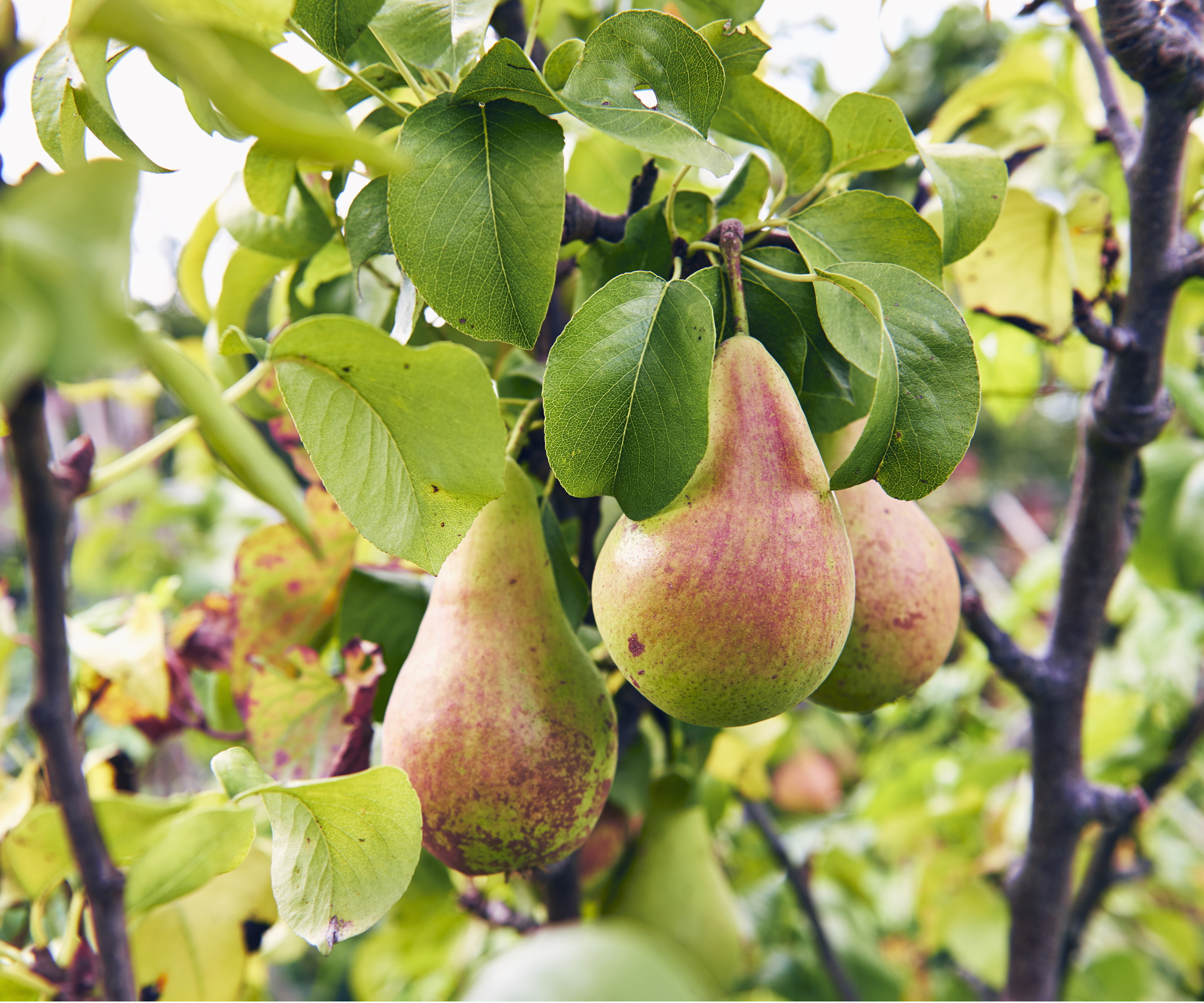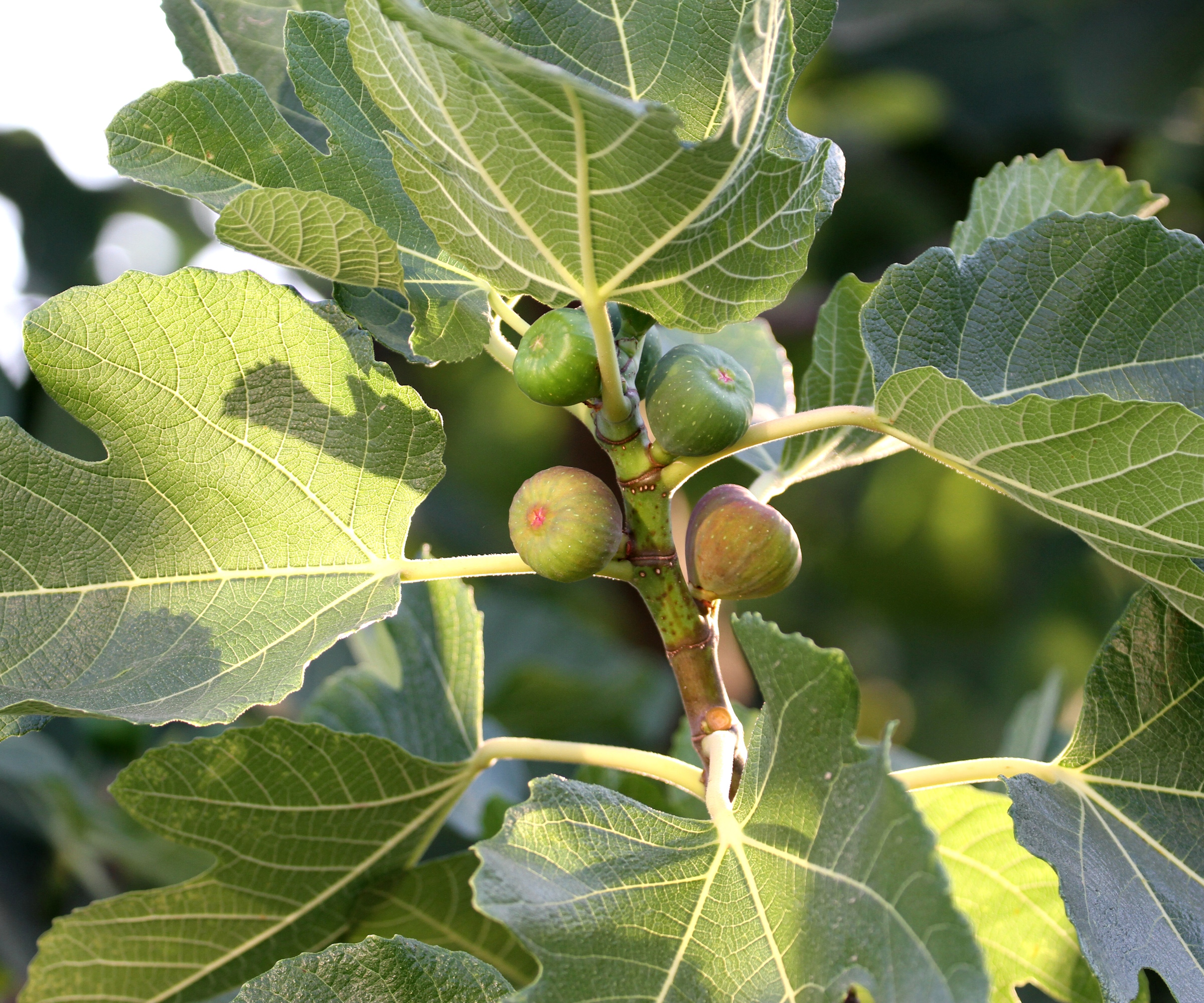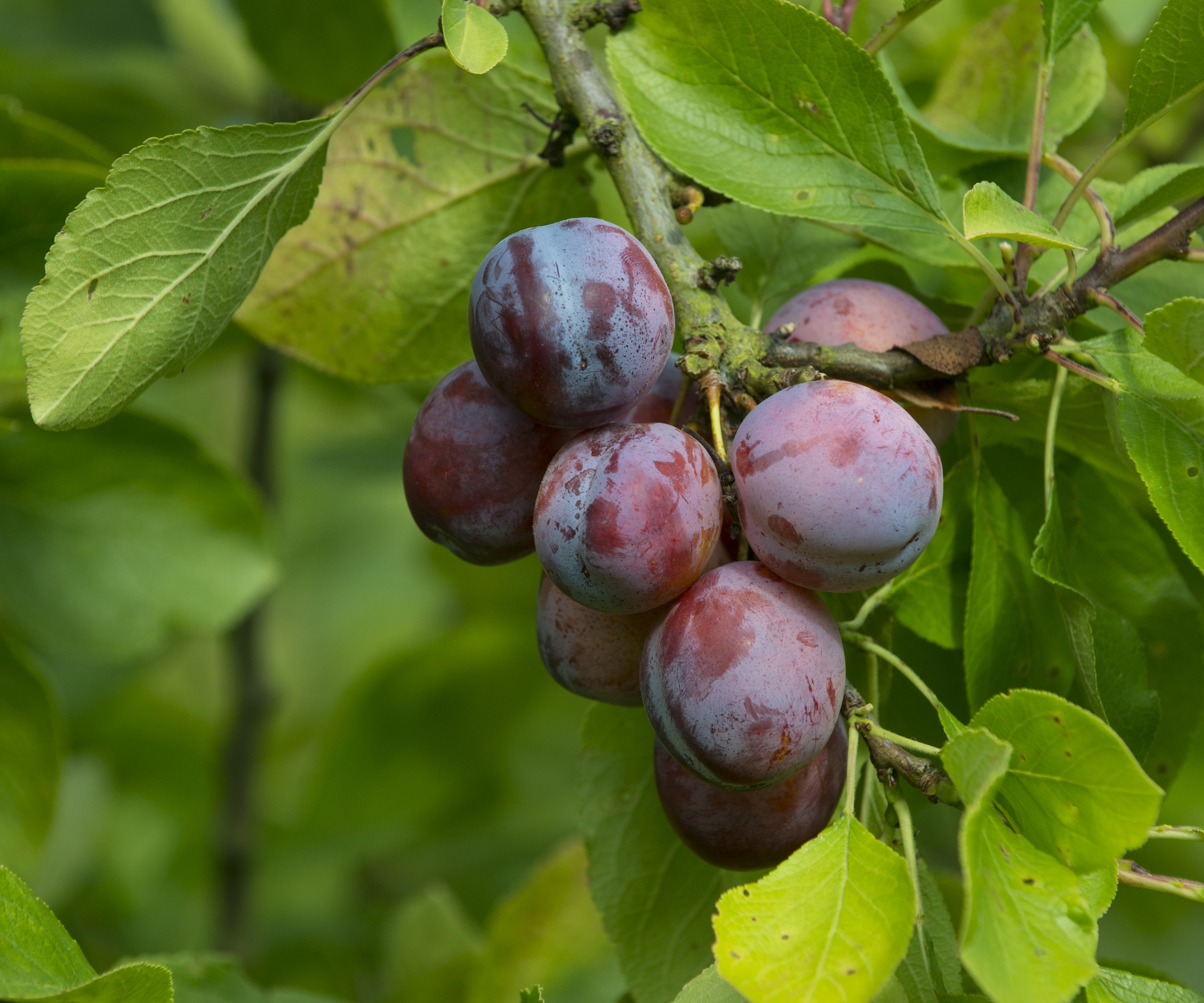
Growing your own fruit at home may sound like it requires a lot of time and effort for healthy trees and bumper harvests. But it does not always require long hours of arduous care and maintenance throughout the year, as there are so many easy fruit trees to grow.
I have grown many different fruit trees in walled gardens and orchards as a professional gardener. However, you do not need to be an experienced horticulturist to have happy and healthy trees that provide you with delicious fruit each year.
This guide features some of the easiest fruit trees to grow. Along with tips for where to plant each fruit tree, I also outline some factors that make them simple to grow and include some key care tips.

What are the easiest fruit trees to grow?
The following fast-growing fruit trees are simple to grow and can survive outdoors year-round. They are also ideal fruit trees to grow in pots, as dwarf varieties are suitable for harvests of delicious homegrown fruit on a deck or patio.
1. Apple

Apple trees are simple fruit trees to grow and there is a wide range of types and varieties. There is bound to be an apple tree for any location and desire.
When you plant an apple tree, the important care tasks are giving it lots of sun, planting it in fertile and well-draining soil, and pruning the apple tree annually to keep it healthy and productive. In addition, taking time to fertilize apple trees in spring once they are established will also encourage strong growth and boost fruit production each year.
Different types of apple trees require varying ‘chill hours’ that dictate the amount of cold weather they require to flower and set fruit. Picking a variety suited to your climate ensures a good yield each year. For easier aftercare, look for apple tree varieties that are self-fertile and disease-resistant.
A medium-sized apple tree that reaches heights of just 8-10 feet and is cold hardy down to -30 degrees. The Honeycrisp Tree is also disease resistant and a reliably heavy cropper once established.
2. Cherry

Cherry trees offer a wonderful combination of beautiful spring blossoms and delicious summer fruits. Self-fertile types mean you can get a crop with just one tree and dwarfing varieties open up the opportunity to grow the fruit tree in pots in smaller spaces.
Plant cherry trees in fertile and well-draining soil in a spot where they can get lots of sunlight. Sun is essential for sweet cherries, which need the sun to ripen, while dessert varieties can grow in a shaded spot.
To keep the tree healthy, prune a cherry tree in the summer after harvesting to prevent diseases. Pruning can keep a tree compact and open up the center of the tree to boost air circulation and light penetration.
If you want a long-term experiment, learning how to grow a cherry tree from seed means you can grow your own. However, it will take ten years to fruit and the cherries it produces will be different to the ones you tasted.
A compact, self-fruiting cherry tree suitable for US hardiness zones 5-9. The fruits resist splitting - an issue often seen in areas with high summer rainfall.
3. Fig

Fig trees can be easy to grow in most backyards. There are varieties of fig trees to grow in both warm and cold climates, so you can grow a fig tree perfectly suited to your location. The other bonus is that fig trees are drought-tolerant fruit trees once established, and self-pollinating.
Fig trees want to grow in a warm and sunny position in the backyard. They are fast-growing trees so fig tree pruning wants to be done twice a year, during dormancy in late winter or early spring and also in mid-summer. Always take care when pruning fig trees as they can bleed sap.
A great fig tree for colder climates is the ‘Chicago Hardy’ fig tree, available at Fast Growing Trees, which tolerates temperatures down to -10 degrees.
4. Peach

They have a reputation for being much trickier to look after, however, it is not too difficult to grow and care for peach trees, even in cooler climates.
Peach trees can grow in US hardiness zones 5-9 and the key to happy trees is to plant a peach tree in a warm and bright spot. Taking advantage of the heat from sunny walls and the protection they can offer from cold is a great way to enjoy success with peach trees.
There are many self-fertile peach tree varieties to consider and compact forms can be ideal fruit trees for pots. Prune a peach tree in spring or summer to avoid silver leaf, keep them well-watered during dry spells, and mulch them annually.
A durable and cold-tolerant peach tree to plant in cooler regions is the ‘Reliance’ peach tree, available at Fast Growing Trees.
5. Pear

Pear trees grow well in US hardiness zones 4-8 and can be very easy to maintain, provided you give them a sunny location and avoid planting them in frost pockets. There are disease-resistant and self-fertile varieties of pears to plant, though pears will do better when grown with other trees in the same pollinating group.
It is important to remember to water the fruit trees during extended dry periods and prune pear trees each winter to maintain a good shape, boost air circulation, and remove dead, damaged, or diseased branches.
To help a pear tree to fruit - it may take a few years from planting the tree to getting the first harvest - and keep it healthy, fertilize the fruit tree with a dedicated fruit tree feed in early spring.
Bartlett is one of the most popular pears in the world. Ideal for zones 5-9 it grows to 18-25 feet and is suited to growing in urban environments.
6. Plum

Plum trees are hardy in US hardiness zones 6 and above and come in dessert, culinary, or dual-purpose varieties. Once established a couple of years after planting plum trees, they can produce bumper crops of sweet plums every summer. The trick of healthy plum trees is to plant in a sunny and sheltered spot into fertile and well-draining soil and to water well for the first few years.
When established, pruning becomes the most important task to get right. Pruning plum trees should be done in spring or early summer, as trimming at any other time would be a fruit tree pruning mistake that leaves the plum tree vulnerable to silver leaf and bacterial canker. Mulching around trees and feeding them in spring and summer can help with blooming and fruiting.
Santa Rosa is one of the most popular plum trees. Adaptable to most soil types and self-fertile - though they will fruit better if there is a second plum tree nearby - it can grow outdoors in zones 5-9.
FAQs
What fruit tree needs the least amount of water?
Any fruit tree needs watering regularly to get established and it will take 2-3 years to develop a strong root system. Once they get established, fig trees are the most drought-tolerant fruit trees. However, even hardy and drought-tolerant varieties of fig trees will benefit from deep watering during extended hot and dry periods.
Planting a drought-tolerant fruit tree will be a sensible choice in dry climates to help make any care routine easier. As well as fig trees, the likes of pomegranates and olive trees can also be relatively low-maintenance fruit trees to plant if you are concerned about how much you may need to water plants.







